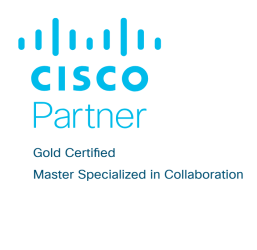Outbound Dialing
- Ad Hoc: This is the most simplistic approach to outbound dialing and software is not necessarily required. Agents know they need to call someone, so they pick up the phone and do it. Many contact centers will have dialing lists generated within a CRM, or other system, which prompts agents to dial out. While this can work in a small setting, it lacks any sort of metrics or reporting and falls short of any sort of automation.
- Agent Preview: In this method, a campaign is set up and a list of customer information (including phone numbers) is loaded into the system. Agents are selected for outbound calls and are live on the phone as calls are placed to customers, on a one-to-one basis. The agent can mark calls as complete, add a wrap-up code, or note that the customer would like to be called back later. This is generally considered to be the friendliest of automated outbound calling types (from a customer service perspective) since there is always an agent on the line. However, the customer doesn’t always answer, so this may not always be the most efficient method. Agent Preview dialing is available as part of the Premium UCCX Agent license.
- Predictive IVR: This method is often referred to as “robo calling”. The administrator sets up a campaign and tells the dialer how many ports it is allowed to use. The dialer will call as many numbers as possible, monitoring for things like answering machines and live voices, trying to keep all of the ports busy. When a call is answered, an IVR script is run and only gets to an agent if you script in an option customers can press to go into a queue. Predictive IVR is licensed on a per port basis within Unified Contact Center Express.
- Progressive IVR: This is similar to predictive IVR, but rather than the system deciding how many calls to place at a time, the administrator sets the rate.
- Predictive/Progressive Agent Based: Cisco’s Unified Contact Center Express (UCCX) has added Predictive and Progressive Agent Based campaigns. Like the IVR campaigns, the distinction is whether the system is deciding the dialing rate or if the administrator is. In this style of campaign, agents are reserved so that when a live voice is detected an agent is immediately available to handle the call. You have probably experienced this type of call. In this call, there is a slight delay between you answering and an agent talking to you. A new license type was introduced for this type of dialing which determines how many concurrent agents can handle outbound calls. While this type of campaign may not work for all industries, it often strikes a balance between the inefficiencies of agent preview campaigns and “robo calling.”
Loading Contacts: Unified Contact Center Express (UCCX)
The advent of loading dialing lists via API has made life easier for heavy outbound contact centers, but it has also helped to make an inroads toward auto dialing for the ad-hoc outbound contact centers. Many ad-hoc calls are the result of an agent reading off of a list in a CRM system. Now, a program can get the dialing lists from the CRM system and insert them automatically into a campaign. Times can be added to the record to make sure the calls go out when needed.
Need help determining the right solution for your needs?
Outbound dialing is used for a number of reasons including: appointment reminders, informational messaging, and driving sales. Whatever your needs are, Mindsight can help deploy the infrastructure you need to reach your goals. Contact us today to talk to one of our experienced engineers and start taking advantage of all that Unified Contact Center Express (UCCX) has to offer!
About Mindsight
Mindsight, a Chicago IT consultancy and services provider, is an extension of your team. Our culture is built on transparency and trust, and our team is made up of extraordinary people – the kinds of people you would hire. We’ve always prided ourselves in delivering the full spectrum of IT services and solutions, from design and implementation to support and management. Our highly-certified engineers and process-oriented excellence have certainly been key to our success. But what really sets us apart is our straightforward and honest approach to every conversation, whether it is for a local business or global enterprise. Our customers rely on our thought leadership, responsiveness, and dedication to solving their toughest technology challenges.

